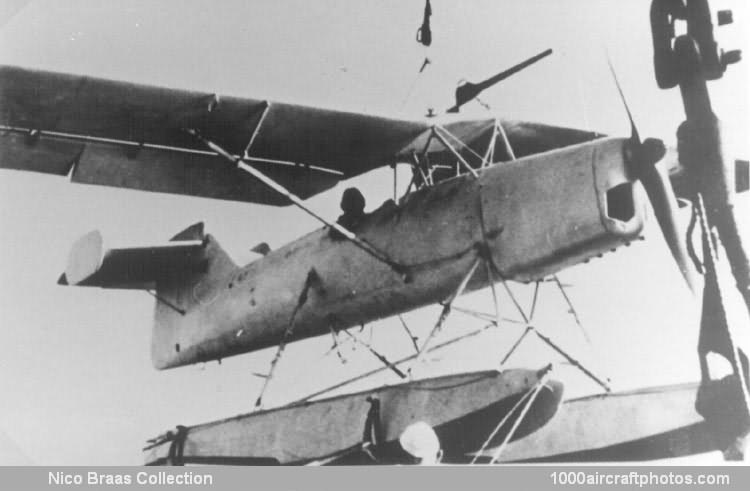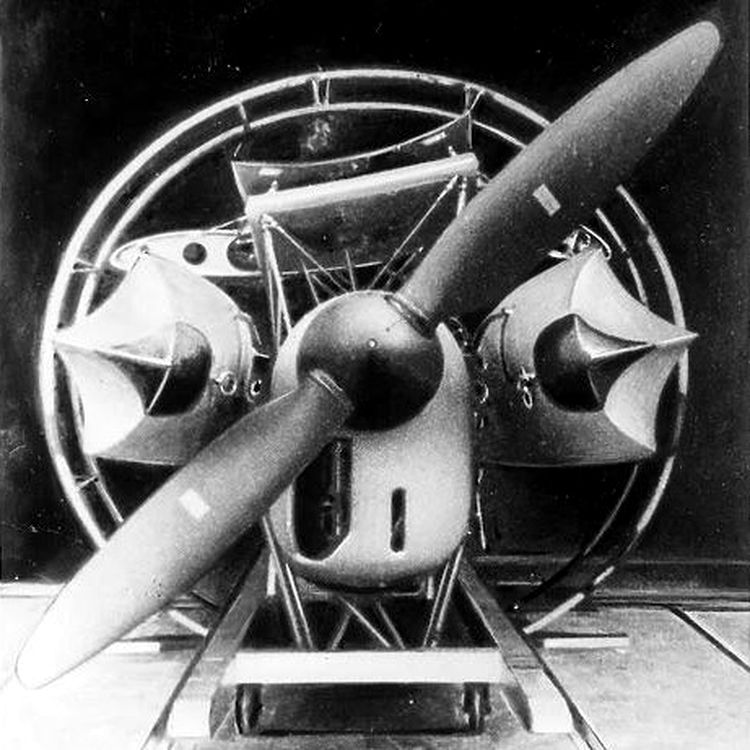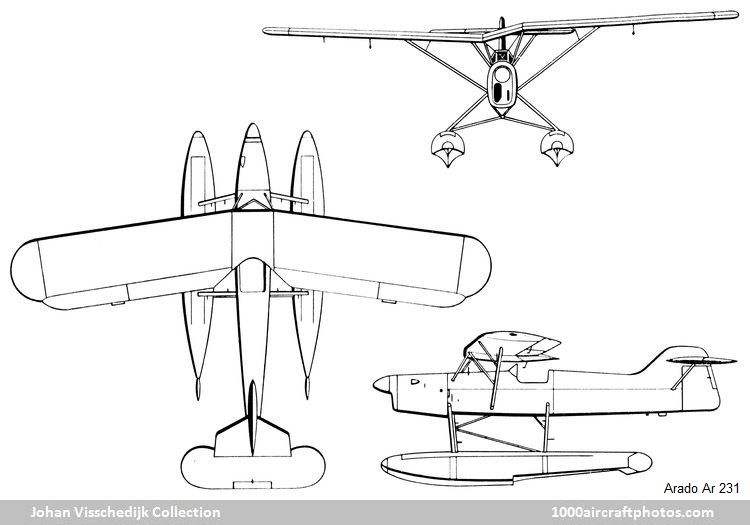04/30/2014. Remarks by
Johan Visschedijk: "Mid-1938 Arado received on order from the
RLM to develop an on-board aircraft for the projected Type XI submarine. It called for an unarmed, single-engine, single-seater with a seaworthiness up to sea state 2. Furthermore, the type should be able to reach an altitude of at least 3,000 m and have a flight duration of three and a half hours.
Dismanteled Ar 231 in circular test frame of 7 ft 4.6 in (2.25 m) in diameter (
Johan Visschedijk Collection)
Special emphasis was placed on the dimensions and the dismantling of the aircraft, which should fit in a 24 ft 7.3 in (7.50 m) long tube with a diameter of 7 ft 4.6 in (2.25 m).
Under the project designation E 300, the Arado plant at Brandenburg began with the design that eventually led to the creation of the Ar 231, a strutted high-wing monoplane of all-metal construction, equipped with two floats. After the mock inspection in December 1939 the RLM issued in January 1940 a contract for four test aircraft, of which the first, the Ar 231 V1, performed the maiden flight on July 25, 1940. The aircraft was powered by an 160 hp Hirth HM 506 A-1 six-cylinder air-cooled inverted in-line engine, as was the Ar 231 V2, while the Ar 231 V3 and Ar 231 V4 were powered by the similar 160 hp Hirth 501 engine.
The Ar 231 employed an extremely simple structure, and in order to facilitate wing folding, the small wing center section was braced above the fuselage at an angle so that the root of the starboard mainplane was lower than that of the port mainplane, permitting the latter to swing over the former when these swiveled on the rear spar for stowage aboard the submarine. Like the
Besson M.B.411 and the
Yokosuka E14Y1, the Ar 231 was intended to be lowered onto the water from the submarine and subsequently retrieved by means of a folding crane after completing its mission. The process of dismantling the floatplane for insertion in the tubular hangar occupied approximately six minutes, erection taking a similar time.
Development of the type was slow, and the final aircraft could be delivered to the test center only in May 1941. Meanwhile the other three aircraft had already completed a comprehensive flight program, in which sufficient flight characteristics were attested, although not to complete satisfaction. By adding end-plates to the vertical stabilizer, as shown in the photo above, improved flight characteristics should be achieved, however, the hoped-for success was failed. Also the shape of the floats, which had been developed in collaboration with the institute of naval aviation of the
DVL, Hamburg, required revision.
In the meantime, the Navy had halted the construction of the type XI submarine, so further development of the Ar 231 lost its cause. Subsequently the Ar 231 V3 and Ar 231 V4 were released for use on the Handelsstörkreuzer "Stier" (HSK 6, auxiliary cruiser "Bull"). After the departure of the ship in early May 1942 only one reconnaissance flight was made, on July 3. On landing a float strut broke, nearly leading to the loss of the aircraft. The following day, the repaired Ar 231 attempted to take off again, but this time a float broke. No more flights were made, the "Stier" sank on September 27, 1942, taking the two Ar 231s with it. The Ar 231 V1 and Ar 231 V2 were scrapped in March 1943."



